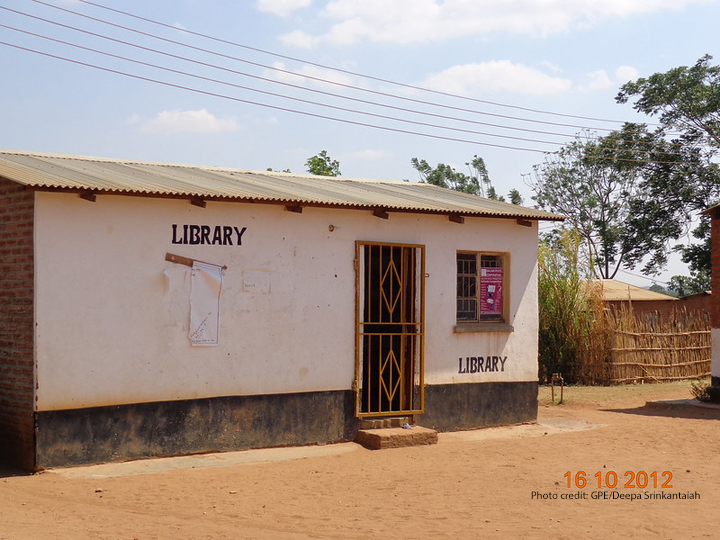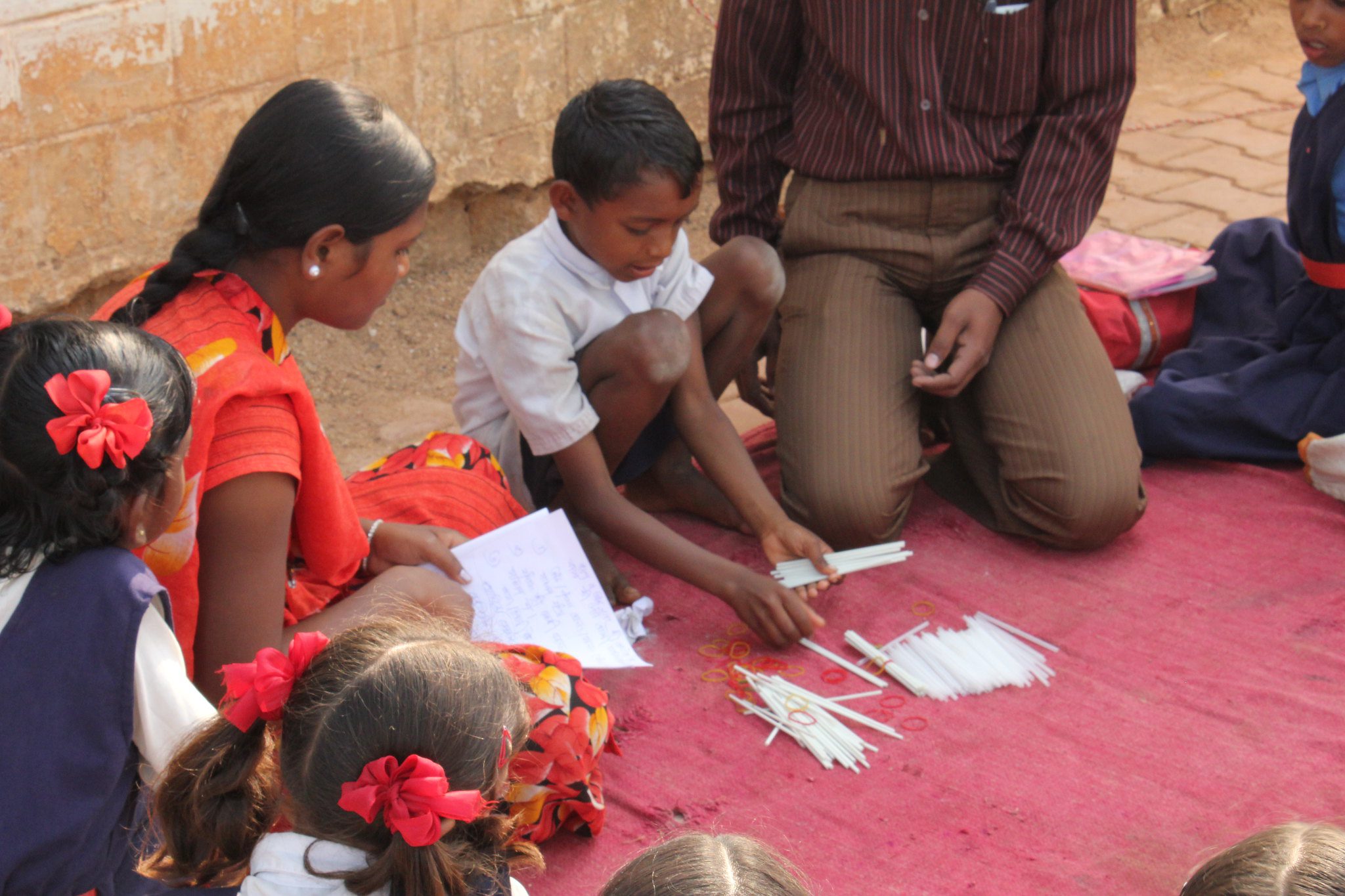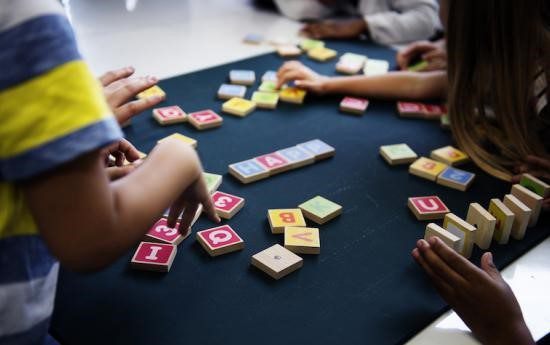This blog was written by Akanksha Bapna, Christina Myers and Namrata Sharma from the EdTech Hub team.
This blog outlines some of the learnings from the first phase of a research study that aims to understand how to optimise learning on a technology-supported personalised learning (TSPL) platform and the role of technological affordances, facilitation and peer learning in improving learning outcomes. We evaluate an offline TSPL mathematics platform accessible on low-cost mobile phones in an after-school setting in low-income communities in Kenya, through a design-based research (DBR) methodology.
Background
The personalisation of education has been occurring prior to the introduction of digital technology in the teaching-learning process. However, there is significant variation in how personalisation occurs – ranging from teachers creating personalised lessons for students, to adaptive learning on digital platforms. Technology holds significant promise for the personalisation of learning, particularly in low and middle income country contexts. EdTech interventions with personalised learning approaches have demonstrated higher gains as compared to programmes that provide content which is not necessarily personalised. Further, TSPL approaches that adapt or adjust to the learner lead to significantly greater impact on outcomes. TSPL is also shown to be beneficial in closing educational gaps for lower-attaining students, particularly those returning to school after an absence, and holds significant promise for the post-pandemic world.
Context of Kenya
Two key points have led to the study being implemented in Kenya. First, the governmental focus on quality education and especially on mathematics. In its national development strategy (Vision 2030), the Government of Kenya highlighted quality of mathematics education as a key tool to enhance innovation and national progress. However, 53% children in rural communities in Kenya (from a sample of 965 children attending 88 different schools) showed an average 13-month decline in their mathematics knowledge through the Covid-19 pandemic. Second, the mobile vs. internet penetration rate demands more offline learning. Despite the fact that Kenya has a very high mobile phone penetration rate, (with 80% of the Kenyan adult population possessing a personal mobile phone) internet penetration in Kenya is only at 43%. Given these low internet penetration rates, offline learning platforms could provide the requisite continuity in learning, particularly in the post-pandemic era in the Kenyan context.
Platform: Oppia
The TSPL platform being tested in this study is called Oppia. Oppia is a story-based numeracy learning platform that can be used by students with a standard Android device or web browser in a self-paced format. The platform was initially developed as a web application that has been accessed by over a million students. This study is testing the offline Android application that supports old devices with low storage. Oppia currently offers 70 hours of learning material through its Basic Mathematics curriculum for grades 2-6, covering concepts like addition, multiplication and fractions. Oppia lessons are translated to local languages and include voice-overs (to assist those with low comprehension levels). These lessons also offer automated tutoring with personalised feedback based on learners’ responses to questions.
Learnings
The first (DBR) phase of the study evaluating the impact of Oppia consisted of 72 grade 5 and grade 6 students from a school in an urban settlement in Nairobi. Students were provided with android devices and an offline version of the application in various combinations of peer settings, devices per child and facilitator:student ratio. The intervention was provided for an hour, twice a week for 5-6 weeks in an after-school setting. The three key areas of learning emerging from the DBR phase are presented here:
Digital literacy: This refers to abilities and knowledge to use electronic tools. In addition to digital literacy being an essential pre-condition for digital learning, research has also shown that a higher level of digital literacy can lead children to reach improved levels of motivation, engagement and learning outcomes. The DBR phase has emphasised the importance of investing time in getting students on board with phone usage, starting in some cases from explaining what a phone is. Concepts such as tapping and scrolling on smart screens, that are often taken for granted, need to be explained to students. Phone features such as switching on the screen, tapping on buttons, adjusting volume and brightness, locating the application, etc. are all aspects of digital literacy that need to be incorporated into a module for digital literacy prior to commencing learning on devices as this could lead to some students lagging behind. Lastly, the use of application-specific features such as use of audio, switching off language or navigation through various application pages should also be part of the digital literacy guidance. The observations around digital literacy highlight the need to invest time and resources in getting students on board with technology and has significant implications for programme design.
Facilitation: A facilitator/teacher can play a key role in striking the balance between structure and agency in a computational learning environment. However, TSPL may have a positive impact “whether or not teachers have an active role in the personalisation”. Given mixed evidence on facilitation type and intensity in the context of TSPL, we studied this aspect in the DBR phase through in-depth observations. We observed new facilitation styles emerging through the DBR phase. Some facilitators encouraged students to start teaching the concepts they had already explained (i.e. to encourage students to teach a concept to their peers, instead of relying on a facilitator). This Introduced the element of learning by teaching for the student. We also found that some facilitators were deeply involved in the learning process and started blackboard teaching instead of allowing students to self-learn. This kind of deep engagement with students requires content and pedagogical knowledge and poses questions for scalability and cost-effectiveness of TSPL programmes.
Peer learning: To the best of our knowledge, there have been no studies measuring the impact of peer interaction on learning outcomes in a TSPL driven intervention. Peer learning has been emphasised for early childhood education and learning and can be enhanced using the right set of design principles. We iterated three versions of peer learning in the DBR phase of the study – (1) students studying individually on a device; (2) students on individual devices but sitting in pairs and helping each other; and (3) two students sharing a device. We found that students working in pairs BUT on individual devices progressed at their own pace while also supporting each other. Working on the same device in pairs was less optimal if one student was more advanced than the other – either slowing down the quicker learner significantly, or not allowing a slower learner to catch up. The sharing model also led to students needing less facilitator time over the course of the intervention. We also found that students on individual devices and working independently did not foster much student interaction, indicating that the social interaction aspect of learning cannot be taken away, even if technology takes centre stage in the learning process.
This blog presents three emergent areas of learning for implementing a TSPL intervention in a low-income country – the need for digital literacy, the potential of peer learning and the role of facilitation in TSPL. These areas of learning are all going to be further studied in an upcoming mixed methods research phase. In the next phase of this study, a mixed methods research phase, we will implement the intervention with a larger sample of over 200 students in an informal settlement in Nairobi (Mukuru). The study will define how to best implement digital literacy and, compare different types of peer-learning and facilitation models in relation to TSPL.






Wow, it’s fascinating to see the power of design-based research in shaping the development of technology-based personalised learning platforms. As someone who’s passionate about education, I truly believe that technology can help bridge the learning gap for students, and this study provides valuable insights into how to design such platforms for scale. Thank you for sharing such an amazing article. Keep sharing more!
Hi Monika,
We have had a very interesting experience co-designing this application with the development team. We will share further insights from the next phase of the research as a follow up.